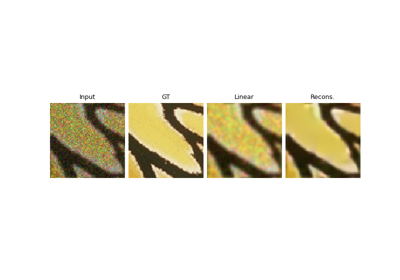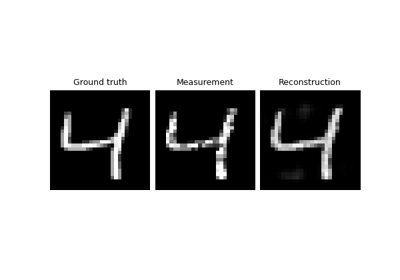PoissonNoise
- class deepinv.physics.PoissonNoise(gain=1.0, normalize=True, clip_positive=False, rng: Generator | None = None)[source]
Bases:
NoiseModelPoisson noise \(y = \mathcal{P}(\frac{x}{\gamma})\) with gain \(\gamma>0\).
If
normalize=True, the output is multiplied by the gain, i.e., \(\tilde{y} = \gamma y\).
- Examples:
Adding Poisson noise to a physics operator by setting the
noise_modelattribute of the physics operator:>>> from deepinv.physics import Denoising, PoissonNoise >>> import torch >>> physics = Denoising() >>> physics.noise_model = PoissonNoise() >>> x = torch.rand(1, 1, 2, 2) >>> y = physics(x)
- Parameters:
gain (float) – gain of the noise.
normalize (bool) – normalize the output.
clip_positive (bool) – clip the input to be positive before adding noise. This may be needed when a NN outputs negative values e.g. when using LeakyReLU.
rng (torch.Generator (Optional)) – a pseudorandom random number generator for the parameter generation.
- forward(x, gain=None, seed: int | None = None, **kwargs)[source]
Adds the noise to measurements x
- Parameters:
x (torch.Tensor) – measurements
gain (None, float, torch.Tensor) – gain of the noise. If not None, it will overwrite the current noise level.
seed (int) – the seed for the random number generator, if rng is provided.
- Returns:
noisy measurements
- update_parameters(gain=None, **kwargs)[source]
Updates the gain of the noise.
- Parameters:
gain (float, torch.Tensor) – gain of the noise.
Examples using PoissonNoise:

Plug-and-Play algorithm with Mirror Descent for Poisson noise inverse problems.

Self-supervised denoising with the Neighbor2Neighbor loss.

